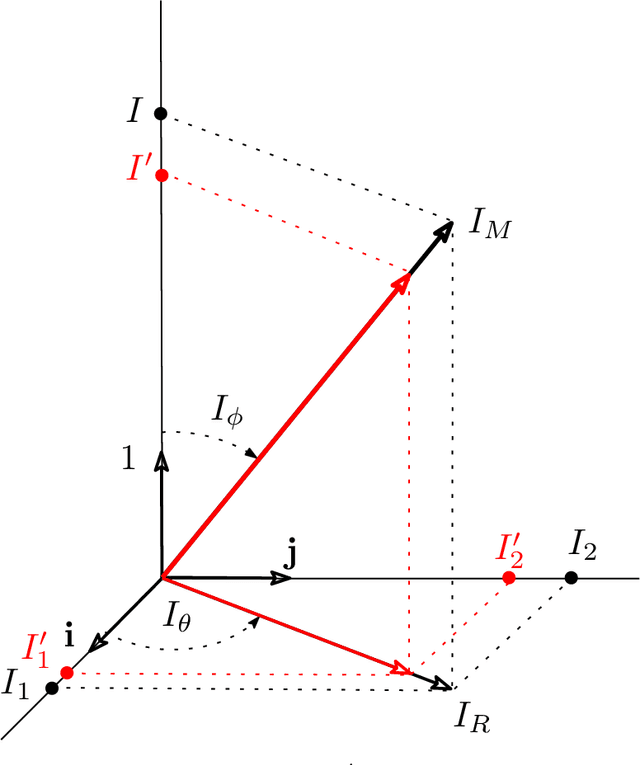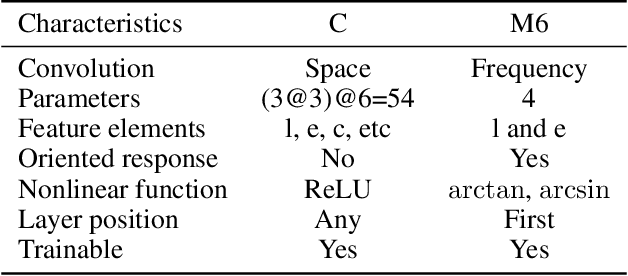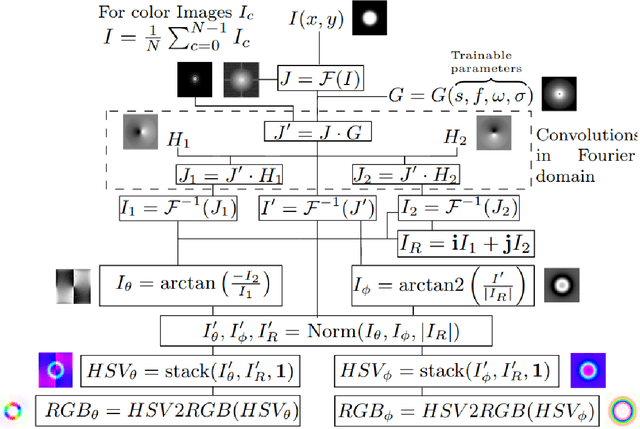Sebastián Salazar-Colores
A trainable monogenic ConvNet layer robust in front of large contrast changes in image classification
Sep 14, 2021



Abstract:Convolutional Neural Networks (ConvNets) at present achieve remarkable performance in image classification tasks. However, current ConvNets cannot guarantee the capabilities of the mammalian visual systems such as invariance to contrast and illumination changes. Some ideas to overcome the illumination and contrast variations usually have to be tuned manually and tend to fail when tested with other types of data degradation. In this context, we present a new bio-inspired {entry} layer, M6, which detects low-level geometric features (lines, edges, and orientations) which are similar to patterns detected by the V1 visual cortex. This new trainable layer is capable of coping with image classification even with large contrast variations. The explanation for this behavior is the monogenic signal geometry, which represents each pixel value in a 3D space using quaternions, a fact that confers a degree of explainability to the networks. We compare M6 with a conventional convolutional layer (C) and a deterministic quaternion local phase layer (Q9). The experimental setup {is designed to evaluate the robustness} of our M6 enriched ConvNet model and includes three architectures, four datasets, three types of contrast degradation (including non-uniform haze degradations). The numerical results reveal that the models with M6 are the most robust in front of any kind of contrast variations. This amounts to a significant enhancement of the C models, which usually have reasonably good performance only when the same training and test degradation are used, except for the case of maximum degradation. Moreover, the Structural Similarity Index Measure (SSIM) is used to analyze and explain the robustness effect of the M6 feature maps under any kind of contrast degradations.
Desmoking laparoscopy surgery images using an image-to-image translation guided by an embedded dark channel
Apr 19, 2020



Abstract:In laparoscopic surgery, the visibility in the image can be severely degraded by the smoke caused by the $CO_2$ injection, and dissection tools, thus reducing the visibility of organs and tissues. This lack of visibility increases the surgery time and even the probability of mistakes conducted by the surgeon, then producing negative consequences on the patient's health. In this paper, a novel computational approach to remove the smoke effects is introduced. The proposed method is based on an image-to-image conditional generative adversarial network in which a dark channel is used as an embedded guide mask. Obtained experimental results are evaluated and compared quantitatively with other desmoking and dehazing state-of-art methods using the metrics of the Peak Signal-to-Noise Ratio (PSNR) and Structural Similarity (SSIM) index. Based on these metrics, it is found that the proposed method has improved performance compared to the state-of-the-art. Moreover, the processing time required by our method is 92 frames per second, and thus, it can be applied in a real-time medical system trough an embedded device.
 Add to Chrome
Add to Chrome Add to Firefox
Add to Firefox Add to Edge
Add to Edge